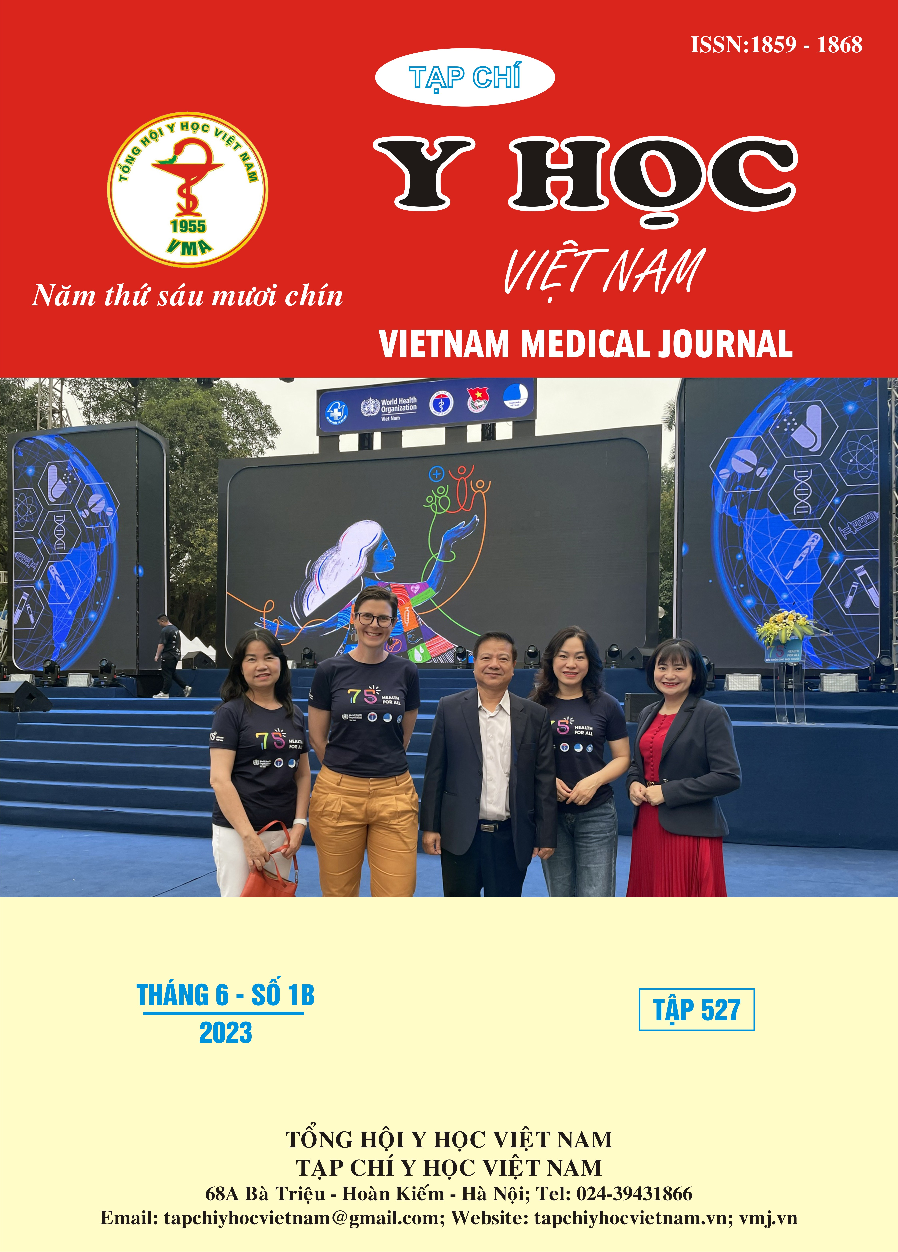SURVEY ON URINE ALBUMIN/CREATININE RATIO AND URINE OSMOLALITY IN THE BETA THALASSEMIA PATIENTS
Main Article Content
Abstract
Objectives: Investigation of albumin/creatine ratio and urine osmolality in adults with beta thalassemia. Methods: A cross-sectional descriptive study of 171 subjects including 114 adults with beta thalassemia, 57 healthy subjects as controls. Urine osmolality by early morning urine collection was measured in both the disease and control groups. All patients quantified urinary albumin, creatinine and urinary albumin/creatinine ratio (ACR) in 24-hour urine samples. Results: Urine osmolality in the patient group was 553.5 (419.25 - 722.25) mOsm, lower than the control group 987 (838.5 - 1170) mOsm, p<0.001. The percentage of patients with decreased urine osmolality was 27.2%. In the group of patients, urinary ACR was 0.76 (0.5 - 1.59) mg/mmol, 17.0% (19/114 patients) had ACR level ≥ 3.0 mg/mmol. There is a relationship between urinary ACR ratio, urine osmolality with long time to detect disease, disease severity and plasma ferritin concentration in beta thalassemia patients, p < 0.01. Conclucsion: Renal damage and reduced concentrate function are common in patients with beta thalassemia
Article Details
Keywords
Beta thalassemia, plasma ferritin, urinary albumin/creatinine ratio, urine osmolality
References
2. Musallam KM, Taher AT. (2012). Mechanisms of Renal Disease in β-Thalassemia. JASN, 23(8): 1299-1302.
3. KDIGO (2013). KDIGO 2012 Clinical Practice Guideline for the Evaluation and Management of Chronic Kidney Disease. Kidney International Supplements 3: 5-6.
4. Ali BA, Mahmoud AM. (2014). Frequency of glomerular dysfunction in children with Beta thalassaemia major. Sultan Qaboos Univ Med J. 14(1): e88–94.
5. Capolongo G, Zacchia M, Beneduci A, et al. (2020). Urinary Metabolic Profile of Patients with Transfusion-Dependent beta-Thalassemia Major Undergoing Deferasirox Therapy. Kidney Blood Press Res. 45(3):455-466.
6. Nagababu E, Gulyani S, Earley CJ, et al. (2008). Iron- deficiency anaemia enhances red blood cell oxidative stress. Free Radic Res 42: 824- 829.
7. Manotham K, Tanaka T, Matsumoto M, et al. (2004). Transdifferentiation of cultured tubular cells induced by hypoxia. Kidney Int. 65: 871-880.
8. Sadeghi MV, Mirghorbani M, Akbari R. (2021). β-Thalassemia minor & renal tubular dysfunction: is there any association? BMC Nephrol. 22: 404.
9. Karimi M., Arandi N., Haghpanah S., et al. (2015). Efficacy of Deferasirox (Exjade(R)) in Modulation of Iron Overload in Patients with beta-Thalassemia Intermedia. Hemoglobin. 39:327–329.


